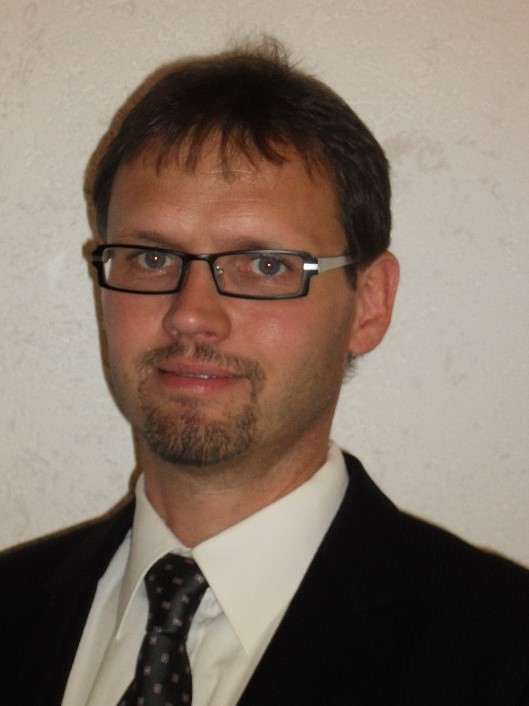Steinbeis experts determine the impact of mobility trends
To convey the general need to travel around freely and make this understandable, statistics are needed. It doesn’t matter whether people need to move around in cities or out in the countryside, people have the same requirement everywhere. In rural areas, people may not be prone to jump on a bicycle and ride for miles at a time; instead the automobile and public means of transportation are more important. Mobility and Logistic, a Steinbeis Transfer Center, is now entering new territory itself by researching and assessing current travel trends and examining how applicable different ideas are to rural areas.
In the specific field of logistics, the team at the center is looking at freight forwarding on public roads. Everyone who buys products through the internet would like their goods to be quickly and safely delivered to their home. But what consequences does this have in the logistics industry? This is the question that the experts were hoping to answer at Mobility and Logistic, the Steinbeis Transfer Center.
Electric vehicles feature heavily in conversation these days and lots of people and companies “want a piece of the action,” or at least don’t want to miss the boat. In rural areas, too, electric vehicles certainly have a role to play. But expectations with e-cars are vastly different to cars with gas or diesel engines, so this makes it all the more important to scrutinize the areas where such vehicles would be used. Accordingly, the Steinbeis Transfer Center has been conducting a project aimed at evaluating electric car use in the Black Forest. This involved closely examining a variety of vehicles, setting up local infrastructure including charging stations, and assessing data at three campuses belonging to Furtwangen University (HFU): Furtwangen itself, Schwenningen, and Tuttlingen. To determine the role electric vehicles could play in rural areas, a number of criteria were considered: the specific nature of the local infrastructure, service and maintenance factors, environmental influences (temperatures, energy consumption with lots of hills), and subjective experiences. After comparing the technical data and caroptions, the project team concentrated on four vehicles: the Mercedes B-Class, the Renault Zoe, the Nissan e-NV200, and the smart fortwo. Each vehicle was used in an entirely different way: Classic cars made it easier for employees and students to switch between different campuses, so they could be used a bit like a company car. The van was used by the university postal service for moving goods around, although it was also used for trade fairs and medium-sized loads needed by technical services.
Summarizing people’s experience during the project, unfortunately things did not look good for electric vehicles. There were multiple negative impacts resulting from the local environment. Just one example that particularly stands out is battery life. If one compares rural with urban areas, journeys in the country generally last several miles and there are more hills to drive up and down. Also, winter temperatures are usually lower – sometimes significantly so. This was particularly the case with the area chosen for the study, which was the upper areas of the Black Forest. The battery range under such rural conditions can be half the distance achievable in cities, and this is extremely unsettling for drivers. It is also worth noting that the charging time below freezing temperature can be three times longer. Accordingly, the results of the project were frightful, especially in the winter. Generally the best results were achieved under predictable and controlled conditions involving short journeys. If critical factors such as the impact of temperatures, battery life, and charging times can be worked out in combination with the right price, there is nonetheless little doubt that this technology has a role to play in our modern infrastructure.
But public transportation networks are also an important aspect of modern travel in rural areas. As these typically depend on subsidies, it will be particularly important to coordinate communication with neighboring communities and local transportation cooperatives. The team is currently looking at internal evaluations of critical connections – work already carried out by local transport companies to arrive at any optimizations that could be made in cooperation with the authorities in rural districts. If it still appears that transportation is poor, or there are critical shortcomings in the public network, alternatives will have to be looked into, such as setting up “community coach clubs” or different setups for sharing rides.
As part of another project, the Steinbeis Transfer Center has been looking closely at the issue of parking spaces for trucks. When truck drivers cannot find a free parking space, they have to keep driving. They then risk breaking the law on maximum time at the wheel (ignoring fatigue issues – which in the worst-case scenario can result in an accident). Alternatively, they have to park in unofficial off-road areas. When a driver spends too long at the wheel, this is logged automatically on the digital tachograph and violations can result in a hefty fine. To avoid this, drivers often try to find a place to park a long time before their official driving hours come to an end. This costs drivers valuable driving time – when they could be on the highway transporting goods. This is ignoring environmental issues. When trucks spend a long time looking for a place to park, they often drive up and down parking lots and this results in higher carbon emissions. The Steinbeis Transfer Center has worked out that a truck that has to drive off the highway five times looking for a place to park for the night emits approx. 10.6kg of greenhouse gases. Extrapolating this number for one truck for the whole year, this is the equivalent of more than 3 tons of CO2. That is the same as using an extra 1000 liters of diesel each year. Parking a truck in unsafe areas (away from illuminated parking lots or away from the highway) is a risky undertaking for drivers, the trucks themselves, and of course the cargo. According to losses calculated by the German insurance industry, around 300 millions euros’ worth of cargo were stolen in 2015. An EU study estimated that the damage resulting from stolen goods across Europe amounts to over 8 million euros. One way to reduce these losses would be to provide help with parking lot planning (especially for people working in logistics planning), for example by booking parking spaces, or planning contingency areas along driving routes, or both.
Ultimately, it is the freight forwarding companies that have to meet the cost of inefficient parking space searches. They also have to pay for the additional insurance premiums. As part of the EU project, the Steinbeis Transfer Center Mobility and Logistic conducted a study on the topic of truck parking in Germany and the rest of the EU. This involved a survey of drivers, freight forwarders, and parking lot operators, with questions about processes, experiences, and personal opinions. It was important for the body at the European Commission (DG Move) to gain a realistic overview of the issues faced on highways in Europe. Unfortunately, the findings provided sober reading: All stakeholders want to identify a solution for the problem of trying to find parking spaces for trucks, but nobody wants to pay for it.
Contact

Prof. Dr.-Ing. Jochen Baier

Kay-Uwe Zimmermann
Prof. Dr.-Ing. Jochen Baier is director of Mobility and Logistic, a
Steinbeis Transfer Center at Furtwangen University (HFU). The key
areas worked in at the Steinbeis Enterprise include mobility
management, logistics support, and process optimization.
Kay-Uwe Zimmermann is a member of the team working on the “Travel
Solutions in Rural Areas” project at Furtwangen University (HFU). The
aim of the project is to find a sustainable and environmentally friendly
way to address the travel needs of HFU staff and students and apply
this to other rural areas.

